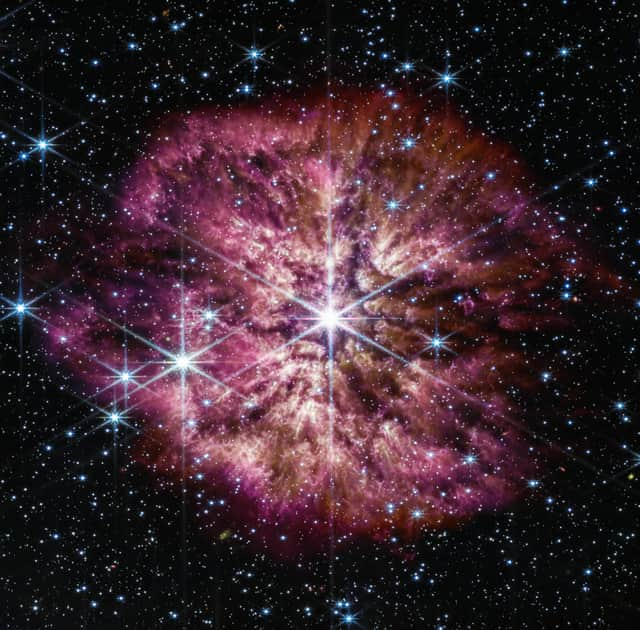BELLS 1: the chaotic star inching toward a violent death as it beams new signals - what is a supernova?
and live on Freeview channel 276
BELLS 1 is inching towards a massive supernova. Every star ages, but astronomers rarely get to observe it happen in real time. The star, BELLS 1, is beaming new signals not originally observed in 2018. This new signal could mean that this chaotic star is inching towards a spectacular death.
The star has a mass of almost 25 times more than our sun, and is currently undergoing a transition to become a Wolf-Rayet star, an unstable class of stars, and astronomers may witness the star’s journey to its violent end.
Advertisement
Hide AdAdvertisement
Hide AdSo how were the new signals spotted, what is a Wolf-Rayet star and what happens when a star goes into a supernova? Here is everything you need to know.


How was BELLS 1’s new signal spotted?
According to Space.com, the star lies near the Triangulum galaxy, also known as Messier 33. Its signals were detected in the peaks and valleys of the star’s spectra - the wavelengths of the electromagnetic radiation it emits - which shows the BELLS 1 to be churning carbon or iron through its nuclear fusion. This new information shows that it’s inching closer to exploding into a supernova.
Olivia Gaunt, a graduate student at Tufts University in Massachusetts who is part of the new research, said Tuesday (6 June) while sharing the findings at the 242nd meeting of the American Astronomical Society: "It's really interesting that we have been able to see an actual change in the spectrum of the object in just four years. We believe this might be the first observation of a Wolf-Rayet star evolving in real time.”
BELLS 1 is named so as it is an acronym standing for: “broad emission-lines luminous sources” - which is the wide range of emissions radiated by Wolf-Rayet stars. The researchers suggest the star initially began as a hot and massive star which lost its hydrogen reservoir by combining lighter elements into heavier ones via nuclear fusion.
Advertisement
Hide AdAdvertisement
Hide AdBELLS 1’s spectra were detected due to its furious winds, which are around 2.2 million to 5.4 million mph (3.5 million to 8.7 million km/h) and shed about 10 solar masses worth of star matter every million years or so. The discarded material is then thrown back into the universe where it can trigger the formation of future generations of stars.
Back in 2018, BELLS 1 was discovered using the Keck Observatory in Hawaii, the star has three emission lines. But during their follow-up observations in 2022, BELLS 1 has a new emission line, hinting that it took a step further in its short and energetic evolution. Shining with the light of millions of suns, BELLS 1 is now closer to the end of its 10 million-year lifetime.
What is a Wolf-Rayet star?
Often dubbed as WR stars, these are a rare heterogeneous group which have unusual spectra which show prominent broad emission lines of ionised helium and highly ionised nitrogen or carbon. This indicates a very high surface enhancement of heavy elements, depletion of hydrogen and strong stellar winds.
Surface temperatures of WR stars range from around 20,000 kelvin to 210,000 kelvin - which is hotter than almost all other kinds of stars. They are evolved massive stars which have lost their outer hydrogen fusing helium or heavier elements in their core. They are all highly luminous due to their high temperatures, but most of their output is ultraviolet.
Advertisement
Hide AdAdvertisement
Hide AdWhat happens when a star goes into a supernova?
A supernova happens when a massive star runs out of fuel and can no longer sustain itself, so it collapses in on itself. When it does this, it releases energy in the form of light and heat - and the light is what is known as a supernova.
It occurs during the last evolutionary stages when a star is triggered into a runaway nuclear fusion. The original object then collapses into a neutron star or a black hole - or it is destroyed to form a diffuse nebula.
Comment Guidelines
National World encourages reader discussion on our stories. User feedback, insights and back-and-forth exchanges add a rich layer of context to reporting. Please review our Community Guidelines before commenting.
